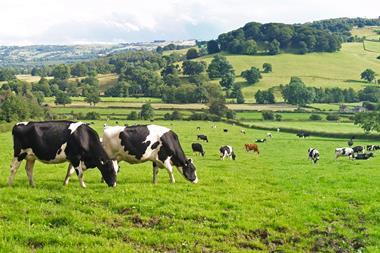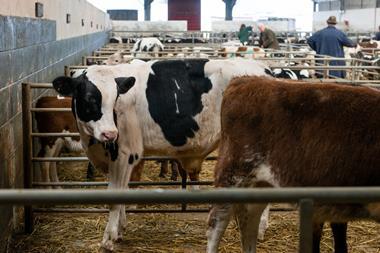It is shifting emphasis from the carcase side to a wide variety of convenience cuts and portions with coatings, sauces and marinades.
And many of its key lines are centred on the barbecue. Whether indoor or outdoor, barbie style foods are now central to the multiples' requirements. And meat, to appeal to time-starved young professionals, has to come convenience-style without bone, gristle, fat or fuss. Even lamb is minced and reformed into burger or grillsteak formats, and mince can now be pork mince.
Most market sales data indicates a return to near normality at the supermarket checkouts in the wake of BSE and other food scares. Taylor Nelson Sofres Superpanel survey, for instance, shows beef and lamb volume and value in May were in double digit growth from the base of 12 months earlier. Strong performances were also recorded for bacon, sliced cooked meats and some frozen products.
However, the fact that volumes and value have made up lost ground should not obscure the question mark that hangs over the strength and stability of consumer demand before the food scares.
Carcase beef, notably, has only just regained its performance of two years ago a performance that was not considered impressive even then.
The MLC is now forecasting a long running downward trend in British consumer demand for beef and wholesalers are commenting on soft prices, a consequence of so much South American product being available and because consumer and retailer alike appear to have lost enthusiasm for purchase growth.
Bacon, however, has performed better than most market analysts expected due to its convenience qualities, and there is buoyant trading in the lamb sector.
Resilience in consumer demand or unexpected sales bursts should signal to all sectors of the industry that they need to improve their understanding of the types of product consumers want to see on their supermarket shelves.
Ten years ago consensus among marketers and analysts was easy: retail demand for most carcase meat in the forms of traditional cuts and joints was softening. Sales of bacon rashers and most lamb cuts and joints were suffering because of social changes and the age profile of their purchasers. In particular, family lifestyles were rapidly changing.
It was believed that some of this drift away from traditional joints and cuts would be offset by sirloin steak, which was expected to attract increasing expenditure, and fresh pork, sure to benefit from a broad shift in demand from red to white meat.
But BSE has fundamentally altered attitudes in the meat industry, which are reflected in today's trading relations between supermarket buyers and representatives of processors, importers and the dwindling numbers of other wholesalers. Specifically, the biggest slaughterers of cattle and importers of beef complain of supermarkets growing "greedier" in the last few months. One major domestic processor told The Grocer: "Margins are tight. Last year the supermarkets wanted to be seen helping the farmers, but this year"
Irish suppliers are among those to point to the lack of promotion by the multiples.
But from the retailers' perspective the market appears much more unstable these days in the aftermath of food scares. Also they have felt compelled to take on the role of safeguarding public health and a limited responsibility for the circumstances of their agricultural suppliers as demonstrated by the generous prices paid by the multiples to farmers last year. Some short term rebound, as retailers attempt to widen their margins again, was inevitable.
But with the consensus on convenience and added value, there are plenty of processors and more intensive manufacturers furiously developing added value lines, with an abundant input from the supermarkets.
{{FOCUS SPECIALS }}
Close menu
- Home
- Retail & Wholesale
-
Products & Suppliers
- Back to parent navigation item
- Products & Suppliers
-
Product Categories:
- Back to parent navigation item
- Product Categories:
- Alcoholic drinks
- Bakery
- Cereals & breakfast
- Cheese
- Chicken & poultry
- Chocolate
- Confectionery
- Crisps, nuts & snacks
- Dairy
- Fish
- Fresh produce
- Frozen
- Household
- Meat
- Own Label
- Sauces & condiments
- Seasonal
- Soft drinks
- Vaping
- Vegan & plant-based
- World foods
- Suppliers
- People
- Reports & Data
-
Topics A-Z
- Back to parent navigation item
- Topics A-Z
-
Popular topics:
- Back to parent navigation item
- Popular topics:
- Cost of living crisis
- Crime
- Deposit Return Schemes
- Finance
- Government & Regulation
- Health
- Inflation
- Loyalty
- Marketing
- Mergers & Acquisitions
- New Product Development
- Sourcing
- Supply chain
- Sustainability & environment
- Technology
- Ultra Processed Foods
- Vaping
- A-Z all topics
- Content by type:
- Events
- Subscribe now
Sign in to comment on this article
Not logged in before? Register for FREE guest access today.
You will be able to:
- Read more stories
- Receive daily newsletters
- Comment on stories
Advert



















No comments yet